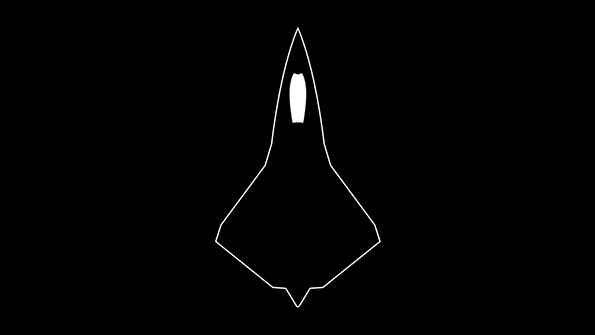
The Biden administration has requested funding to develop an NGAD Navy fighter under the special access Link Plumeria program.
A tiny crack has opened in the U.S. Navy’s closely guarded plans for a next-generation crewed fighter, with the White House confirming a relationship between the F/A-XX project and an apparent special access program code-named Link Plumeria.
The disclosure adds new depth to the Defense Department’s ongoing investment of more than $40 billion to develop a new family of Next-Generation Air Dominance (NGAD) technology for the Air Force and Navy, with the latter facing calls by some lawmakers for a potentially devastating budget cut in fiscal 2024.
- House panel threatens funding for F/A-XX program
- Link Plumeria proposes to spend over $11 billion over the next five years
Although both services are heavily invested in NGAD development, the Air Force has been far more public in the past several years about the spending profile and progress reports—including an announcement in May that industry teams had been asked to submit offers to win the development contract for a next-generation crewed fighter.
By contrast, the Navy has kept most details of its own NGAD development program secret. Unlike the Air Force, the Navy had classified the budget line until the fiscal 2024 request was unveiled for its F/A-XX program, which is intended to replace the Boeing F/A-18E/F Super Hornet starting in the 2030s.
But the funding for the F/A-XX program had been hiding all along under the Link Plumeria special access program (SAP) code name, which—although classified—ranked as the Pentagon’s fourth-largest research and development program.
The fiscal 2023-27 $11.5 billion budget for Link Plumeria in the fiscal 2023 request fell behind only the spending levels for the Air Force’s Ground-Based Strategic Deterrent, NGAD and Next-Generation Overhead Persistent Infrared programs. In fact, the requested budget for Link Plumeria exceeded the proposed $10 billion outlay in research and development for the Northrop Grumman B-21 Raider during the same period.
Despite its size, Link Plumeria was a public mystery. Although the large investment pointed to a known, classified development project such as the F/A-XX, Navy officials refused to connect the programs as recently as two months ago.
“As stated in the budget exhibit, details are classified per Executive Order 13526, Sec 1.4 (a),” a Navy spokesperson stated in an email to Aviation Week on May 23.
But the White House Office of Management and Budget (OMB) directly tied Link Plumeria to the F/A-XX program for the first time in a July 10 communication to Congress.
The House Armed Services Committee has passed a version of the fiscal 2024 defense authorization bill that proposes to reduce a $2.1 billion spending request by the Navy for Link Plumeria to $1 billion, citing only “unjustified requirements.”
In response, the OMB said the committee’s proposed spending cut for Link Plumeria would harm the Navy’s development plans for the F/A-XX fighter.
“The language makes it impossible for the Navy to satisfy a critical element of the [national defense strategy] in support of Joint Force priorities,” the OMB letter stated. “The 70% reduction breaks the program and leaves the acquisition strategy unexecutable.”
Some lawmakers support Link Plumeria, however. The defense subcommittee of the House Appropriations Committee voted for a version of the fiscal 2024 spending bill that includes the full $2.1 billion request for the program.
The F/A-XX may only be part of the Navy’s NGAD portfolio funded under the Link Plumeria program. The Air Force, for example, is funding several different technologies, including a new class of Collaborative Combat Aircraft and a Next-Generation Adaptive Propulsion system.
“There may be more elements to the program than just a new fighter, like some sort of collaborative uncrewed aircraft or new component-level technologies being developed for the program,” Metrea Strategic Insights Managing Director Todd Harrison tells Aviation Week.
“We can’t know for sure what else is in there, but I think it is safe to say that [Link Plumeria] has been the Navy’s funding line for its next-gen fighter all along,” Harrison adds.
Although the Air Force and Navy are expected to collaborate on certain NGAD technologies such as mission systems and adaptive engines, the services may be pursuing very different aircraft designs.
In 2019, a Navy official told Aviation Week the Navy had no requirement for the F/A-XX to penetrate highly contested airspace and so had no need for the Air Force’s level of extreme stealth, especially in the aft section of the airframe.

Comments